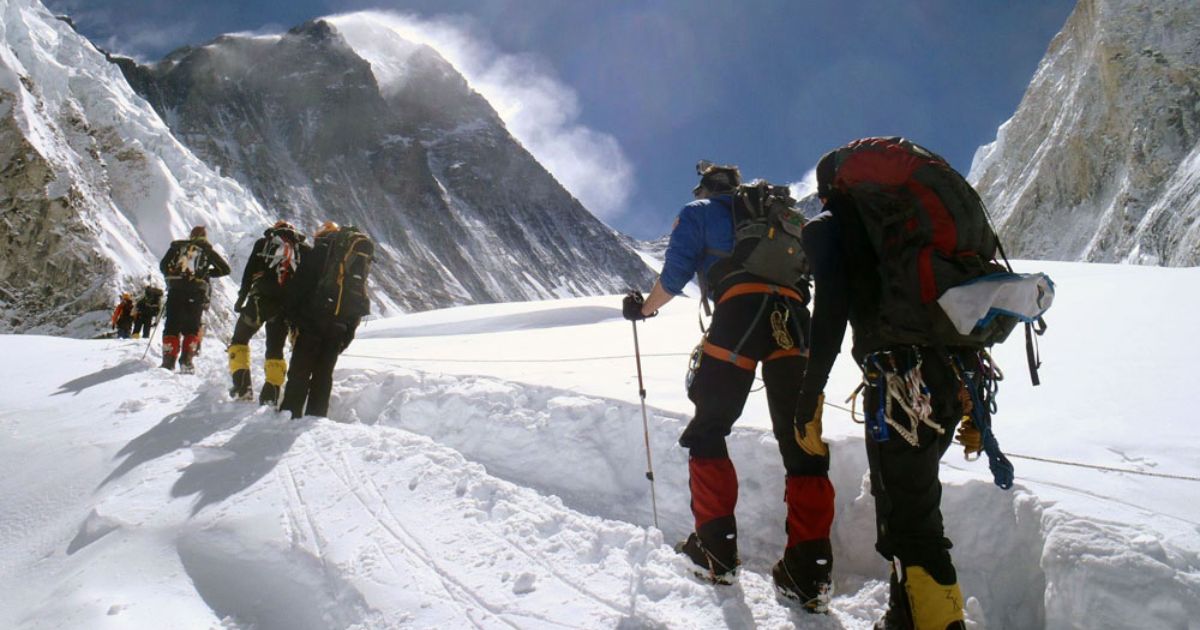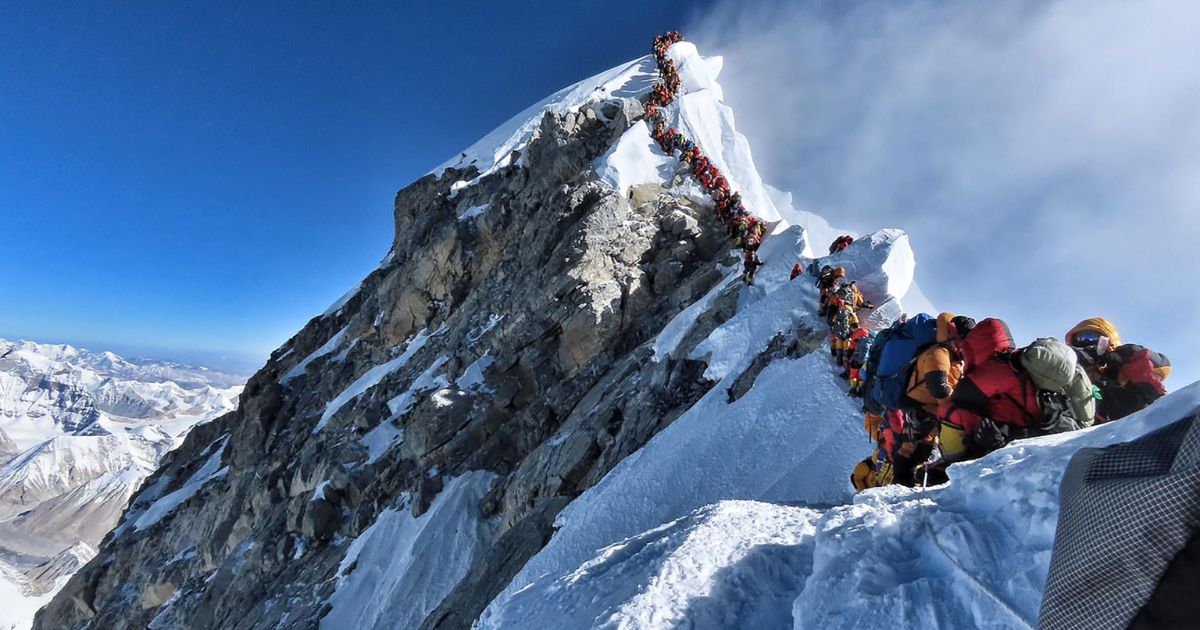Have you ever wondered how long it would take for you to conquer the mighty Mount Everest? Brace yourself for an epic journey of endurance and resilience as you embark on the challenge of a lifetime. Scaling the highest peak in the world is no ordinary feat; it requires unwavering determination and a strong sense of belonging to a league of extraordinary climbers. In this guide, we will explore the factors that affect the duration of your ascent, the various routes you can take, and the training required to conquer this monumental task. So, lace up your boots, gather your courage, and let’s embark on an adventure that will test your limits like never before.
Key Takeaways
- Mount Everest is the highest peak in the world, standing at 29,029 feet.
- Factors such as altitude and acclimatization, weather conditions and seasons, and physical fitness and preparation all affect the duration of a climb.
- Altitude makes it harder for the body to get oxygen, and acclimatization involves spending time at various altitudes to allow the body to adjust.
- Weather conditions on Mount Everest can be harsh and unpredictable, with temperatures dropping as low as -40 degrees Celsius and high wind speeds. Choosing the right climbing season can greatly impact the duration of the climb.
Mount Everest: An Overview
If you are planning to climb Mount Everest, it is important to have a clear understanding of its key characteristics. Mount Everest, standing tall at 29,029 feet, is the highest peak in the world. Its majestic presence and formidable nature have attracted countless climbers throughout the years. The mountain presents a wide range of challenges, from treacherous weather conditions to steep and icy slopes.
It has claimed the lives of many adventurers in pursuit of summiting its peak. However, despite the difficulties, Mount Everest has also witnessed historic expeditions that have left an indelible mark on mountaineering history. From the first successful ascent by Edmund Hillary and Tenzing Norgay in 1953 to the daring feats of modern climbers, the mountain has become a symbol of human perseverance and achievement.
Factors Affecting Climbing Duration
When it comes to climbing Mount Everest, there are several factors that can significantly affect the duration of your expedition. First and foremost, the altitude and the process of acclimatization play a vital role in determining how long it will take you to reach the summit. Additionally, the weather conditions and seasons on the mountain can greatly impact your progress, as harsh weather can force climbers to wait or turn back. Lastly, your physical fitness level and preparation beforehand will also influence the duration of your climb, as being in good shape and having the necessary skills and experience will make the ascent more efficient.
Altitude and Acclimatization
To properly prepare for climbing Mount Everest, you need to understand how altitude and acclimatization affect the duration of the climb. Altitude plays a crucial role in determining the pace at which you can ascend the mountain. As you climb higher, the air becomes thinner, making it harder for your body to get the oxygen it needs. This is where the acclimatization process comes in.
It involves spending time at various altitudes to allow your body to adjust gradually to the changing conditions. Acclimatization helps to prevent altitude sickness, a condition that can occur when your body doesn’t adapt properly to the high altitude. By allowing yourself enough time for acclimatization, you minimize the risk of altitude sickness and increase your chances of successfully reaching the summit.
Weather Conditions and Seasons
To fully understand the duration of climbing Mount Everest, you must consider the impact of weather conditions and the changing seasons on your ascent. The weather conditions on Everest can be extremely harsh and unpredictable, with temperatures dropping to as low as -40 degrees Celsius and wind speeds reaching over 100 miles per hour. The climbing seasons on Everest are divided into two main periods: the pre-monsoon season, which takes place from April to May, and the post-monsoon season, which occurs from September to November.
During the pre-monsoon season, the weather is generally colder and more stable, making it a popular choice for climbers. However, the post-monsoon season offers better visibility and less snowfall, making it easier to navigate certain sections of the mountain. Understanding the weather conditions and choosing the right climbing season can greatly impact the duration of your climb. Transitioning from weather conditions and seasons, let’s now delve into the importance of physical fitness and preparation for climbing Mount Everest.
Physical Fitness and Preparation
To effectively gauge the duration of your climb up Mount Everest, it is crucial to consider the factors that affect climbing duration, such as physical fitness and preparation. Physical training plays a vital role in determining how long it will take you to conquer the mountain. Building endurance through cardio exercises like running, cycling, and hiking is essential. Additionally, incorporating strength training exercises into your routine will help you develop the necessary muscle strength to tackle the challenging terrain.
Alongside physical training, dietary considerations are equally important. Consuming a well-balanced diet that includes plenty of carbohydrates, protein, and healthy fats will provide you with the energy needed for the climb. Proper hydration is also essential to maintain optimal performance. By dedicating time to physical training and focusing on your diet, you will be better equipped to handle the physical demands of climbing Mount Everest, ultimately impacting the duration of your journey.
Different Routes to the Summit
When it comes to climbing Mount Everest, there are various routes you can take to reach the summit. Each route has its own set of challenges and difficulty levels, as well as different conditions that can affect your climb. Whether you choose the popular South Col route or opt for the less crowded North Ridge route, it’s important to understand the time required for each route to plan your expedition effectively. So, let’s explore the different routes to the summit and the factors that can impact your climbing duration.
Popular Climbing Routes
If you’re planning to climb Mount Everest, there are several popular routes that you can take to reach the summit. Each route offers its unique challenges and rewards, attracting climbers from all over the world. Here are four popular routes to consider:
- South Col Route: This is the most popular and well-known route, taken by the first successful climbers, Sir Edmund Hillary and Tenzing Norgay. It starts from the Nepalese side and requires technical skills and endurance.
- North Col Route: This route begins from the Tibetan side and is known for its steep slopes and challenging icefalls. It offers stunning views of the Tibetan Plateau.
- West Ridge Route: This less popular route is famous for its technical difficulty, requiring advanced climbing skills and experience. It offers breathtaking views of Lhotse and the Khumbu Valley.
- East Face Route: One of the most challenging routes, the East Face demands exceptional climbing skills and experience. It is known for its exposed rock faces and unpredictable weather conditions.
As you consider these routes, it’s important to understand the difficulty levels and conditions that each one presents.
Difficulty Levels and Conditions
Considering the difficulty levels and conditions of different routes to the summit, you’ll encounter various challenges and obstacles on your journey to climb Mount Everest. The mountain offers multiple routes, each with its own unique set of difficulties and climbing conditions. To make it easier to understand, here is a table showcasing the five main routes to the summit:
| Route | Difficulty Level | Climbing Conditions |
|---|---|---|
| South Col Route | Very Difficult | Steep slopes, crevasses, icefalls, and extreme weather |
| Southeast Ridge | Extremely Difficult | Technical climbing, rockfall, and high altitude |
| Northeast Ridge | Extremely Difficult | Exposure to strong winds, icy conditions, and narrow ridges |
| West Ridge | Difficult | Challenging rock sections, deep snow, and avalanche risk |
| North Col Route | Difficult | Ice climbs, steep snow slopes, and unpredictable weather |
As you can see, no matter which route you choose, you’ll face demanding difficulties and unpredictable climbing conditions. It’s crucial to be well-prepared, physically and mentally, and to have the necessary experience and skills to navigate these challenges successfully.
Time Required for Each
To estimate the duration of your climb up Mount Everest, you’ll need to take into account the specific route you choose and the varying conditions along each route. The time required for each route can vary significantly depending on factors like climbing speed and rest intervals. Here are four different routes to the summit and their estimated time:
- South Col Route: This is the most popular route and typically takes around 60 days to complete. It offers a gradual ascent and tends to have more favorable weather conditions.
- North Col Route: This route is slightly more challenging and takes approximately 65 days to complete. It involves crossing the Tibetan Plateau and offers stunning views of the North Face of Everest.
- West Ridge Route: Considered one of the most difficult routes, it takes around 70 days to complete. It requires technical climbing skills and offers a more adventurous and remote experience.
- East Face Route: This route is extremely challenging and takes approximately 75 days to complete. It involves steep and exposed terrain, making it suitable for only the most experienced climbers.
Training and Preparation Required
Before attempting to climb Mount Everest, you will need to undergo extensive training and preparation. It is crucial to develop both physical and mental strength to face the challenges that await you on the mountain. Physical training should include aerobic exercises, strength training, and endurance-building activities to prepare your body for the extreme conditions and demanding terrain.
Mental preparation is equally important, as climbing Everest requires immense focus, determination, and resilience. You must be prepared to push through physical and mental barriers to reach the summit. Additionally, gear requirements are essential for a successful climb. Here is a table highlighting some of the gear you will need:
| Gear Requirements |
|---|
| – Climbing boots |
| – Insulated clothing |
| – Ice axe |
| – Crampons |
| – Harness |
Typical Timeframes for Climbing Everest
To plan your expedition, it is important to understand the typical timeframes for climbing Everest. The duration of the climb can vary depending on several factors affecting speed. Here are four key considerations to keep in mind:
- Acclimatization: Proper acclimatization is crucial to prevent altitude sickness and ensure a safe ascent. This process usually takes around 6-8 weeks, allowing your body to adjust to the extreme conditions.
- Weather conditions: Everest’s unpredictable weather can significantly impact the climbing timeframe. It’s essential to choose a season with favorable weather windows to increase your chances of a successful summit.
- Route selection: The choice of route can affect the time it takes to reach the top. The most popular routes, such as the South Col route, usually take around 60-70 days, while less crowded routes may require more time.
- The importance of guides: Having experienced guides by your side is crucial for a successful climb. They provide valuable knowledge, support, and guidance, helping you navigate the challenges and stay safe throughout the journey.
Understanding these factors will help you plan your Everest expedition effectively. Now, let’s explore the incredible world of record-breaking ascents.
Record-Breaking Ascents
Now, let’s delve into the realm of record-breaking ascents on Mount Everest. Over the years, there have been numerous individuals who have achieved extraordinary feats on this majestic peak. These record-breaking achievements have shaped the history of Everest expeditions and continue to inspire climbers from around the world. One such historical expedition took place in 1953 when Sir Edmund Hillary and Tenzing Norgay became the first climbers to successfully reach the summit.
Their monumental achievement paved the way for future explorers and ignited a passion for mountaineering. Since then, there have been countless remarkable expeditions, with climbers pushing the boundaries of human endurance and resilience. Each record-breaking ascent on Mount Everest serves as a testament to the indomitable spirit of human exploration and the pursuit of greatness.
Conclusion: The Ultimate Test of Endurance
Reaching the summit of Mount Everest is the ultimate test of endurance, requiring months of preparation and acclimatization. It is a feat that pushes the limits of human physical and mental capabilities. As you embark on this journey, here are four key points to consider:
- Mental resilience: The climb to the top of Everest is a constant battle against doubt, fear, and fatigue. Your ability to stay focused, motivated, and determined will be tested like never before.
- Physical strength: Endurance training is crucial to withstand the extreme physical demands of the climb. You must build strength in your legs, core, and upper body to tackle the treacherous terrain and endure long hours of hiking.
- Altitude acclimatization: The high altitude poses a significant challenge to your body’s ability to function properly. Gradual acclimatization is necessary to allow your body to adjust to the thin air and prevent altitude sickness.
- Teamwork and support: Mount Everest is not conquered alone. The journey requires teamwork, camaraderie, and trust in your fellow climbers. Together, you can overcome the obstacles and share in the triumph of reaching the top.
Embarking on the ultimate test of endurance which is climbing Mount Everest will push you to your limits, both physically and mentally. It is a challenge that will test your resolve, strength, and perseverance. But with the right preparation, mindset, and support, you can conquer this formidable peak and join the elite group of individuals who have stood on top of the world.
FAQ’s
Can I climb Mount Everest with no experience?
Climbing Mount Everest with no experience is extremely risky and not recommended. Adequate training and experience in high-altitude mountaineering are essential for safety.
How long does it take to climb Mount Everest?
The duration of climbing Mount Everest varies, but the ascent typically takes around two months. This includes acclimatization, base camp setup, and the actual summit push.
Why does it take 2 months to climb Everest?
The two-month timeframe for climbing Everest allows for acclimatization to high altitudes, overcoming challenging terrain, and navigating unpredictable weather conditions, ensuring a safer and more successful ascent.
How long does it take to climb and get down Mount Everest?
The entire process of climbing and descending Mount Everest can take approximately two months, with the actual summit attempt lasting a few days. The descent is a critical phase and requires careful navigation and attention to avoid accidents.
Conclusion
Climbing Mount Everest is not just a physical feat, but a journey that tests your limits and pushes you to the edge. It’s a symbol of human endurance, determination, and the pursuit of greatness. Standing atop the highest peak in the world, you become one with the clouds, touching the sky and feeling the weight of your accomplishments. The mountaintop whispers stories of triumph and echoes the indomitable spirit within us all. Climbing Everest is not just a conquest, but a transformation of the soul.










